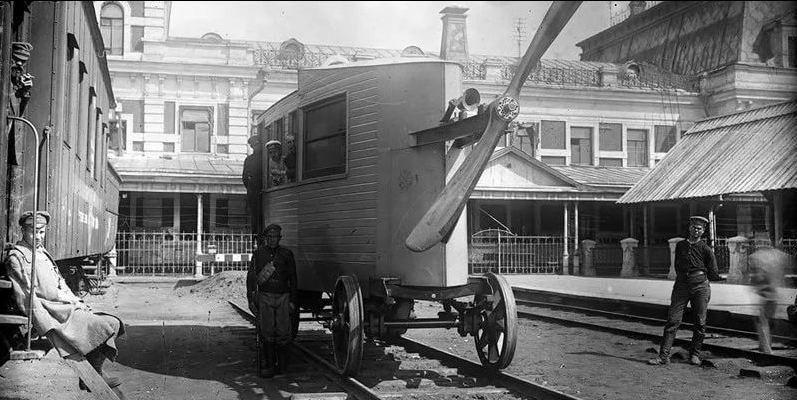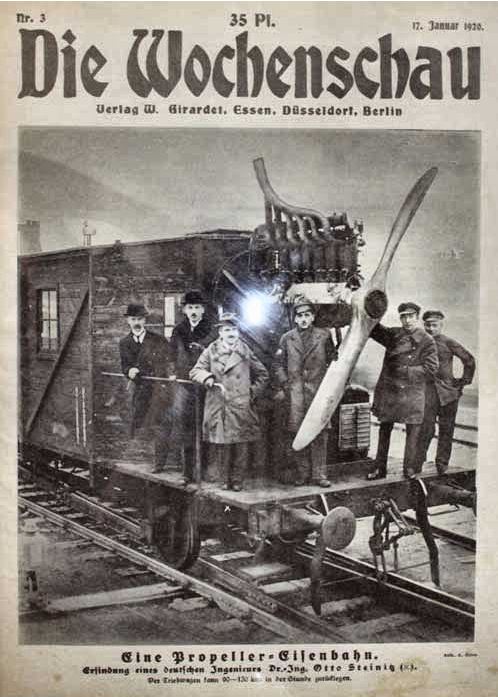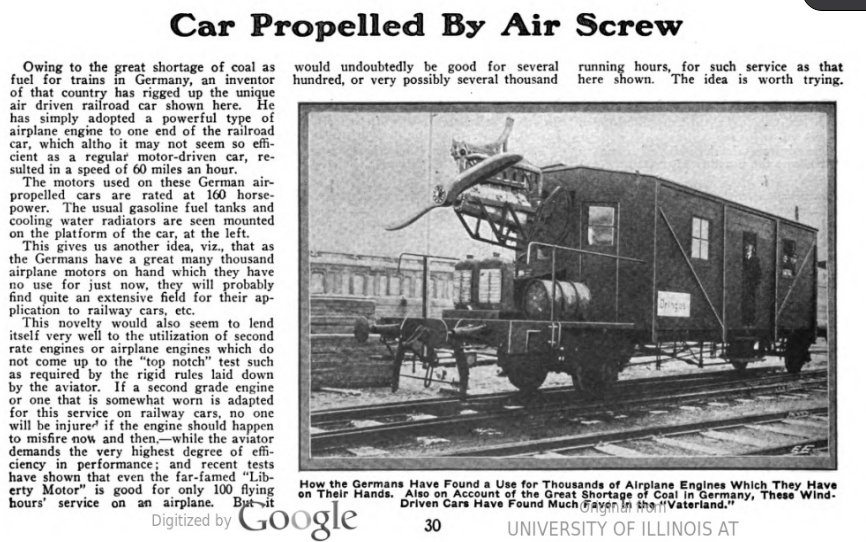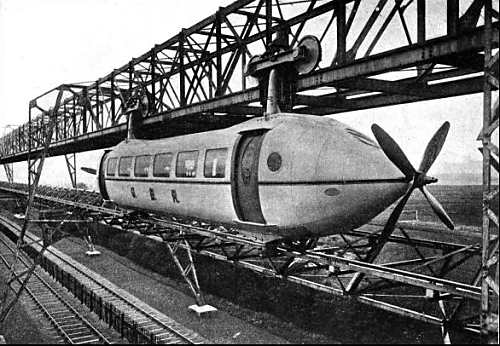Gallery opened Nov 2005
Updated: 4 Jan 2023
The Prop-Draisine added: 1931




Propellor-Driven Locomotives |
Gallery opened Nov 2005 |  
|
 | Left: The Abakovsky Russian Prop-Locomotive: 1917 - 21
|
THE GERMAN DRINGOS PROP-LOCOMOTIVE: 1919
 | Left: The Dringos Prop-Locomotive: 1919
|
Unfortunately no detail is visible in the dark parts of the photo, but a little information can be extracted from the picture. The engine is a 160HP six-cylinder in-line model, with a total absence of silencing on the exhaust stub. One thing that can be asserted with confidence is that this was not a quiet machine.
The test locomotive was built from an old railway freight wagon using a aircraft engines originally contracted for military use. Part of the motivation for this scheme was finding an acceptable civilian use for these engines that had been contracted for the war effort. Subsequent post-WW1 requirements that Germany destroy its stockpile of and manufacturing capacity for military aircraft parts were definitely a factor in diminishing the interest of the corporate backers - the engine manufacturers. The government railroad interests apparently had little enthusiasm for the concept all along.
It is notable that this project was at least ten years ahead of the more widely known Berlin-Hamburg trials of the Krukenberg propellor locomotive. (see below)
 | Left: The Dringos Prop-Locomotive: 1919
|
 | Left: The Dringos Prop-Locomotive: 1919
|
THE BENNIE RAILPLANE: 1929
 | Left: The Bennie Railplane.
|
This remarkable machine is a popular subject on the Web, and searching on "Bennie Railplane" will bring up far more information than there is space for here.
THE PROP-DRAISINE: 1931
 | Left: The Prop-Draisine: 1931
|
THE RAIL-ZEPPELIN: 1931
 | Left: The Rail-Zeppelin: 1931
|
 | |
Above: The Rail-Zeppelin with casing removed: 1931
|
The rail zeppelin was dismantled in 1939 because its material was needed by the German army.
Most of you are probably familiar with Thomas the Tank Engine. I was astonished to hear that rail zeppelins have reached the island of Sodor.
 | Left: Hugo the Rail-Zeppelin
|
  
|